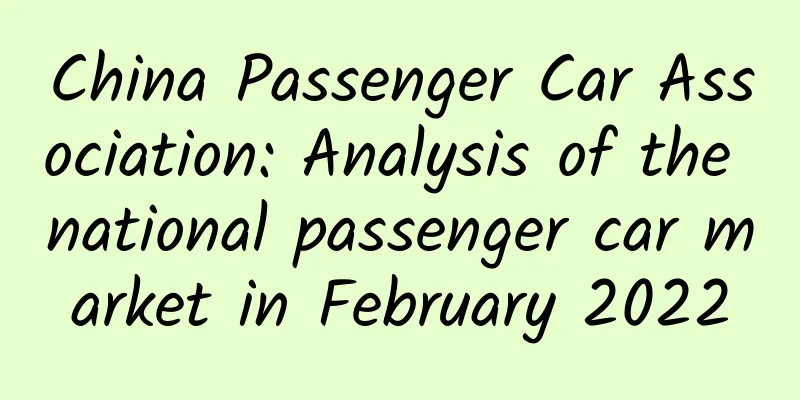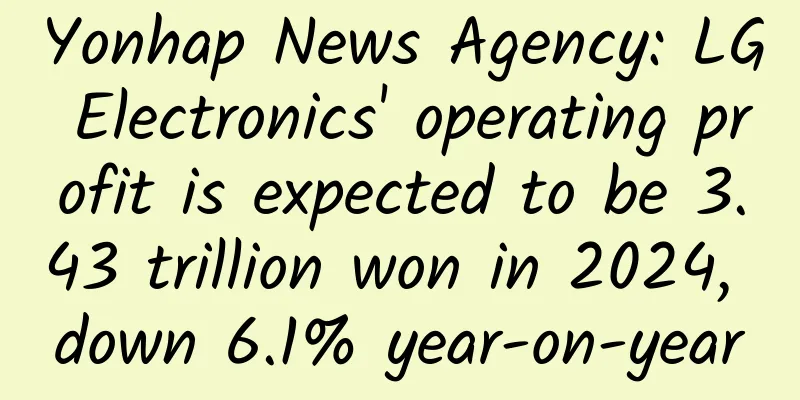China Passenger Car Association: Analysis of the national passenger car market in February 2022

|
1. Review of the national passenger car market in February Retail: In February 2022 , the retail sales of passenger cars reached 1.246 million units, a year-on-year increase of 4.2 % and a month-on -month decrease of 40.0% . The overall retail trend in February was strong. Under the unfavorable circumstances that the Spring Festival this year was 12 days earlier than last year , the cumulative retail sales in January-February were 3.324 million units, 60,000 units less than in 21 years , and the overall trend was good. Since the Spring Festival holiday started on January 31 , but production lines stopped before the holiday and consumers bought cars a few days earlier, the production and sales in January were relatively large. This year, some companies started work earlier after the Spring Festival, and the production loss in February was less due to the Spring Festival, which drove the retail sales in February to grow well both month-on-month and year-on-year. Since the autumn and winter of last year, the epidemic prevention and control has been repeated, but this year the scale of residents returning home has increased significantly. Subsequently, the outbreak in February exceeded expectations and involved 18 provinces and cities, and was concentrated in developed areas. A large number of residents returned to their hometowns, and more migrant workers were employed in their own provinces, which provided certain support for car purchases in some central and western provinces, counties, towns and cities. Although high oil prices have an adverse impact on the consumption of traditional fuel vehicles, with the outbreak of the epidemic in 18 provinces in February , many families have a high awareness of safe travel during the school season, further promoting the purchase of new energy vehicles. With the gradual strengthening of production and wholesale sales in the past few months, the overall market supply has shown a warming trend. Manufacturers are actively preparing for a " good start " in the new year . February is also a continuation of the " good start " , and high growth has boosted morale. Luxury car sales in February were 160,000 units, down 3% year-on-year and 44% month-on-month . Luxury car sales in early January were significantly stronger month-on-month, but the trend did not continue in February . In February , domestic brands sold 540,000 vehicles, up 14% year-on-year and down 42% month-on-month . In February , domestic retail sales of domestic brands were 44% , up 4.3 percentage points year-on-year; the cumulative share from January to February was 44% , up 4.7 percentage points from the same period in 2021. In February , the wholesale market share of domestic brands was 43.4% , up 1.1 percentage points from the same period; the cumulative share from January to February was 45% , up 2.8 percentage points from the same period in 2021. The performance of leading domestic brands is differentiated, and domestic brands have gained significant growth in the new energy market. Therefore, traditional car brands such as BYD have all shown high year-on-year growth. In February , mainstream joint venture brands sold 550,000 vehicles, down 1% year-on-year and 36% month-on-month . In February , Japanese brands had a retail share of 23.1% , up 1.6 percentage points year-on-year. German brands had a share of 20.5% , down 4 percentage points year-on-year. American brands had a market share of 9.1% , down 0.6 percentage points year-on-year. European brands had a share of 0.1 percentage points. Exports: According to the statistics of the China Passenger Car Association, the export of passenger cars (including complete vehicles and CKD ) in February was 133,000 , a year-on-year increase of 69% and a month-on-month decrease of only 21% . The instability of the external environment brings uncertainty risks to the export of independent brands. In February , new energy vehicles accounted for 34% of the total exports . In February , the export of independent brands reached 87,000 units, a year-on-year increase of 44% , and the growth rate slowed down; joint venture and luxury brands exported 46,000 units, a year-on-year increase of 153% . Production: In February , passenger car production was 1.492 million units, up 31.4% year-on-year and down 27.0% month-on-month , showing strong performance. Among them, luxury brand production increased by 15% year -on-year and decreased by 27 % month-on-month ; joint venture brand production increased by 31% year-on- year and decreased by 22% month-on-month ; independent brand production increased by 38% year-on-year and decreased by 31% month-on-month . Although there was a slight loss in production due to the Spring Festival, the production and sales growth in the auto market in February was relatively good, and the supply of joint venture chips gradually improved, which promoted the stable development of production and sales in February . Wholesale: In February , the wholesale sales of manufacturers reached 1.455 million vehicles, a year-on-year increase of 26.9 % and a month -on-month decrease of 32.6% . Due to production constraints, the performance of some automakers was differentiated. The wholesale sales of manufacturers in January and February reached 3.612 million vehicles, a year-on-year increase of 13.6% , achieving a real good start. Although the early Spring Festival resulted in 10 fewer days of pre-holiday sales this year than last year, the cumulative growth rate of 13.6% in January and February was relatively strong due to the demand for replenishment and the strong sales of new energy . The post-holiday production and sales cycle in February was complete, which promoted the rapid growth of manufacturers' production, resulting in manufacturers' production exceeding sales by 40,000 vehicles. The push-type production and sales trend of manufacturers' domestic wholesale exceeding retail by 80,000 vehicles contrasted with the production and sales-driven inventory reduction in February 21 , and also constituted the feature that the growth rate of manufacturers' wholesale in February ( + 26.9% ) was significantly better than the growth rate of retail ( +4.2% ). Inventory: The first three quarters of 2021 experienced a special cycle from destocking to approaching safety inventory. In the fourth quarter, manufacturers' inventories were quickly replenished, laying the foundation for the strong performance of wholesale in January and February this year . The Spring Festival factor led to the characteristics of increased inventory in February . From a breakdown point of view, manufacturer inventory increased by 40,000 vehicles in February from January to February , and decreased by 80,000 vehicles in total from January to February, a decrease of 180,000 vehicles compared with the same period last year , and the manufacturer's inventory improved significantly. Channel inventory increased by 80,000 vehicles in February from January to February, and decreased by 10,000 vehicles from January to February , in sharp contrast to the decrease of 370,000 vehicles last year , which drove a significant increase in wholesale sales. New energy: In February , the wholesale sales of new energy passenger vehicles reached 317,000 units, a year-on-year increase of 189.1% , a month-on-month decrease of 24.1% , and a month-on-month decrease smaller than in previous years. In February , the retail sales of new energy passenger vehicles reached 272,000 units, a year-on-year increase of 180.5% , a month-on-month decrease of 22.6% , and a month-on-month decrease smaller than the trend in February of previous years . There is a certain contrast between the trends of new energy vehicles and traditional fuel vehicles during the Spring Festival. There is a strong demand for first-time entry-level consumption and traditional car replacement before the Spring Festival, which releases positive news for automobile popularization and consumption upgrading. After the Spring Festival, new energy vehicles grow strongly during the school season. The safe travel of the second car for a family is of great significance, which echoes the further recognition and adaptation of urban residents to new energy vehicles in short-distance travel. In the new energy vehicle market, affected by price increases, orders were weak in late January, but rebounded significantly in February . Overall, although there are still local sporadic cases of the epidemic in China, especially concentrated in megacities such as Shenzhen, Tianjin and Shanghai where new energy vehicles are mainly sold, relatively mild epidemic prevention measures have no significant impact on residents' travel and car purchases, and have promoted the sales of new energy vehicles. 1) Wholesale: In February , the wholesale penetration rate of new energy vehicle manufacturers was 21.8% , an increase of 12.2 percentage points from the penetration rate of 9.6% in February 2021. In February , the penetration rate of new energy vehicles of independent brands was 38% ; the penetration rate of new energy vehicles in luxury cars was 29.4% ; and the penetration rate of new energy vehicles of mainstream joint venture brands was only 3.3% . In February , the wholesale sales of pure electric vehicles were 245,000 units, a year-on-year increase of 161.7% ; the sales of plug-in hybrid vehicles were 72,000 units, a year-on-year increase of 350.9% . In February , the sales of high-end electric vehicles grew strongly, and the trend of mid- and low-end models was also strong. The dumbbell-shaped structure of the pure electric market has improved. Among them, the wholesale sales of A00- level vehicles were 68,000 units, accounting for 28% of the pure electric market ; the wholesale sales of A0- level vehicles were 33,000 , accounting for 14% of the pure electric market ; A -level electric vehicles accounted for 23% of the pure electric market ; B -level electric vehicles reached 85,000 units, a month-on-month decrease of 15% , accounting for 35% of the pure electric market . 2) Retail: In February , the domestic retail penetration rate of new energy vehicles was 21.8% , an increase of 13 percentage points from the penetration rate of 8.1% in February 2021. In February , the penetration rate of new energy vehicles among independent brands was 41.9% ; the penetration rate of new energy vehicles among luxury cars was 17.4% ; and the penetration rate of new energy vehicles among mainstream joint venture brands was only 3.5% . 3) Export: In February , 45,300 new energy vehicles were exported , maintaining strong growth. Tesla China exported 33,315 vehicles, SAIC Passenger Vehicle exported 4,325 new energy vehicles , Dongfeng EasyGo exported 4,536 vehicles, Dongfeng Peugeot Citroen exported 1,145 vehicles, BYD exported 804 vehicles, Geely Auto exported 588 vehicles, SAIC Maxus exported 240 vehicles, and other automakers' new energy vehicles were mainly sold in the domestic market. 4) Car companies: In February , the new energy passenger car market was diversified. BYD's pure electric and plug-in hybrid dual-wheel drive consolidated its position as the leader in new energy for independent brands; traditional car companies represented by SAIC Group and GAC Group performed relatively well in the new energy sector. There were 5 companies whose wholesale sales exceeded 10,000 vehicles , an increase of 2 over the same period , including: BYD 87,473 vehicles, Tesla China 56,515 vehicles, SAIC-GM-Wuling 26,046 vehicles, Geely Automobile 14,285 vehicles, and Chery Automobile 10,271 vehicles. BYD, Chery, Geely, SAIC Volkswagen, etc. grew 5-7 times year-on-year compared with February last year . 5) New forces: In February , the sales of new forces such as Ideal, Nezha, Xiaopeng, Weilai, Leapmotor, and WM Motor performed well year-on-year and month-on-month. In particular, the month-on-month decline of Ideal, Nezha, and Xiaopeng was relatively small. Second-tier companies such as Leapmotor also saw a 10- fold year-on-year increase in monthly sales. Among mainstream joint venture brands , Volkswagen South and North sold 11,916 new energy vehicles , accounting for 58% of the mainstream joint venture market share. Volkswagen's firm electrification transformation strategy has begun to bear fruit. Other joint ventures and luxury brands still need to make efforts. 6) Hybrid: In February , the wholesale volume of hybrid passenger cars was 55,888 , up 116% year-on-year and down 20% month-on-month . Among them, Toyota sold 35,750 units, Honda sold 16,225 units, Dongfeng Nissan sold 1,389 units, and GAC sold 617 units. Hybrid has gradually become a new hot spot. 2. Outlook for the national passenger car market in March 2022 The number of working days in March is the same as the same period last year, both 23 days, which is conducive to the increase of production and sales. The amount of sales after suppressing inventory and hiding sales in March last year was small, and the sales statistics were not high. The Spring Festival factors in January and February this year have affected production and sales, and the energy for increasing inventory in March has increased. Domestic oil prices hit a 10 -year high in March this year. The demand for related industries brought about by the peak of 1.8 billion square meters of real estate was weak. The outbreak in February still involved 18 provinces. Therefore, the recovery of industrial and commercial activities in March may be slow, which is not conducive to the release of unit car purchase demand in spring. High oil prices directly push up the daily commuting cost of fuel vehicles , and continue to expand the base for the further promotion of new energy and even oil-electric hybrid technology. The economic situation in 2022 is becoming increasingly complex and severe, and the real estate market has peaked and is showing a clear downward trend. In the short term, the regulation of the real estate industry will tend to be tight and balanced. Some related industries are under great growth pressure, the employment situation and salary income expectations are weak, and consumer demand may be sluggish. Under the influence of the epidemic, the recovery of production, life and service industries after the holidays is cautious, the coverage of the rent reduction policy is relatively limited, and the recent weakness of the stock market has slowed the recovery of the auto market in March . In 2022 , steady growth still requires investment, and transfer payments will increase by 1.5 trillion yuan compared with last year, and the regional balance effect is increasingly evident. With the return of middle-aged migrant workers and the continued efforts in new rural construction, the structural recovery of the auto market faces good opportunities. The export of traditional fuel vehicles is affected by the complex international situation, especially the risk of sudden interruption of exports to Russia and other Eastern European countries. Last year, 150,000 vehicles were exported, and this year's monthly average is nearly 20,000 vehicles. At present, the trade interruption should lead to direct sales losses. The impact of regional conflicts on the operation of China-Europe trains needs to be evaluated in depth. As the epidemic continues to recur, customer demand for new energy vehicles is still on an upward trend. With the decline in new energy subsidies and rising raw material prices, the slight price adjustment of some models in the early stage led to a temporary downturn in orders. After the Spring Festival, the price acceptance of new energy vehicles has recovered. In addition, many new energy vehicles still have a backlog of undelivered orders in the early stage. Therefore, the sales of new energy vehicles in March will not be significantly affected by the decline. The China Passenger Car Association has formed a complete system of six sets of data for production, wholesale, retail, export, factory warehouse, and channel warehouse , and studies the market from multiple perspectives and dimensions. According to the joint judgment of the excellent manufacturer forecasting team of the China Passenger Car Association, it is believed that the overall trend of the passenger car market in 2022 is positive. It is currently estimated that domestic retail sales will increase by 5% in 2022 , and the overall manufacturer wholesale sales will increase by 10% . 3. Encourage consumption of new energy vehicles The government work report released on March 5 this year particularly emphasized the development of new energy vehicles. However, the 2021 government work report did not particularly emphasize new energy vehicles, but mainly emphasized the reform of the entire process of second-hand cars and automobile circulation management. The focus of the government work report last year and this year has changed significantly, and its guiding significance is of great significance. Judging from the operation of the industry in 2021 , the second-hand car industry and other industries have been greatly improved with the support of policies, and have achieved sustainable development by invigorating circulation and driving consumption upgrades. At the end of 2020 , it was clearly judged that the high growth of new energy passenger vehicles in 2021 is a certain trend, so there is no emphasis on supporting policies for new energy in 2021 . The development of new energy vehicles in 2022 will face more uncertainties and pressures, especially the shortage of resources such as lithium ore. According to the data from the China Passenger Car Association, the number of new energy vehicles in China reached 3.31 million in 2021 , with a penetration rate of 15.7% , which is at a relatively high level. The development of new energy vehicles in 2022 is subject to certain resource constraints. In this case, should we control battery production and lower lithium prices? Or should we overcome difficulties and seize opportunities for development? The government work report particularly emphasizes the great significance of the development of new energy vehicles. We should see that the cyclical price fluctuations of resources such as lithium mines are not terrible, the difficulties are common, and the determination is unique to us. The country has stable support in encouraging the consumption of new energy vehicles with a full set of policy combinations, especially purchase subsidy policies, purchase tax and fee policies, purchase quota policies, and road right policies. This is a combination of a series of policies that are of great significance to promoting industrial development. In 2022 , the epidemic is still spreading, and consumers are more willing to travel by private car. The effect of the policy to stabilize the consumption of new energy vehicles has been significantly improved. Therefore, continuing to support the development of new energy vehicles in 2022 is also a huge policy to promote the development of the auto market this year. We believe that the scale of new energy passenger vehicles can reach 5.5 million in 2022 , so this will also bring a large increase in the overall auto market in 2022 and bring stronger industrial transformation and upgrading. Encouraging the growth of new energy vehicle consumption is actually encouraging the growth of private car consumption, which will drive the continued year-on-year growth of China's total consumer spending in 2022. Therefore, the policy of encouraging new energy vehicles is still of great significance. 4. The penetration rate of new energy vehicles will increase rapidly in the first half of the year The increase in the penetration rate of new energy vehicles is characterized by a phased increase. The penetration rate of new energy vehicles increased rapidly in the first half of the year and was relatively stable in the second half of the year. In January 2021 , the wholesale sales penetration rate of new energy vehicle manufacturers was only 8.4% , which quickly increased to 20.4% in August , and was relatively stable at around 20% in the second half of the year. Although the sales of new energy vehicles increased rapidly in the fourth quarter of 2021, the penetration rate was basically stable . The trend of traditional fuel vehicles fluctuates seasonally. The end of the year and the beginning of the year are the peak seasons for first-time buyers, and summer is the downturn for traditional car consumption, forming a "V -shaped " trend. New energy vehicles generally continue to rise, and the characteristics of periodic decline are not obvious. In particular, the 60,000 license plates for new energy vehicles in Beijing were issued in May , and consumers bought cars in a relatively concentrated manner from June to August , which also partially filled the low sales in the off-season. The current growth of the domestic auto market faces great environmental pressure. The wholesale penetration rate of new energy vehicles was 19% in January , but the sales of new energy vehicles in February still reached 320,000 units, a year-on-year increase of 190% , and the penetration rate reached 21.8% . The reason for this is the growth differentiation of the auto market. Traditional fuel vehicles have grown steadily, but new energy vehicles have grown rapidly. Some major new energy vehicle companies account for the vast majority of the increase. Costs are the result of design and innovation, which is difficult to achieve by saving. The design improvements brought by new cars are the key to reducing costs. At present, the sales of new energy vehicles vary greatly. The sales performance of the main models is outstanding, while more new energy vehicles are long-tail effects: there are many models and low sales. In the 200,000 increase in February , the main increase can be divided into BYD's increase of 77,000 vehicles, accounting for 36% of the increase . This is also due to its plug-in hybrid and pure electric efforts to achieve a comprehensive breakthrough. Tesla's increase is also obvious, and behind it is the result of product design innovation and weakening of Tier 1 supplier industry chain support. New energy vehicles must have innovation and independent control of the industry chain to achieve greater growth. 5. Traditional fuel vehicles should be cautious in expanding production capacity The passenger car industry faces a more complex industrial environment in 2022. On March 3 , the London Brent crude oil futures price and the New York West Texas Intermediate (WTI) crude oil futures price exceeded 7 -year highs of $ 119 and $ 116 per barrel, respectively, while the domestic gasoline price exceeded 8 yuan. This has brought a great psychological burden to ordinary consumers to buy fuel vehicles. In addition, some industries have suffered huge losses under the impact of the recent epidemic, and the purchasing power of many entry-level family users has been affected to a certain extent, which has directly impacted the market demand for traditional fuel vehicles. According to the data from the China Passenger Car Association, the production and sales scale of traditional fuel vehicles gradually peaked and fell after 2017. In 2017 , the sales volume of traditional fuel vehicles reached 23.65 million units. At present, the sales volume of traditional fuel vehicles in 2021 is only 17.8 million units, a decrease of 5.86 million units compared with the peak , a decrease of 25% , resulting in a significant decline in capacity utilization. If the business layout of auto companies ( including new investments, etc. ) cannot be reasonably guided, it may lead to the emptying of existing production capacity, serious waste of car manufacturing resources, and a sharp decline in the operating efficiency of the industry. In the current situation of shortage of resources such as chips, there are certain constraints on the expansion of corporate production capacity in 2021 , but when the chip shortage is alleviated in the future, it will inevitably form more severe competition. Therefore, relevant national policies such as the "Automotive Industry Investment Management Regulations" should be updated and improved, and the control of investment access policies in the automotive industry should be strengthened to prevent blind deployment and repeated construction investment; strengthen the supervision of local governments on preferential conditions such as financial taxes for auto companies, and guide local government policies and auto companies to transform to electrification. |
<<: Pro.cn Advertising Home Dai Tao: Products and technology are core competitiveness
>>: DingDong speakers tell you: "Intelligence" and "Quality" should not be contradictory
Recommend
Clinical diagnosis of depression and five practical treatments
An introduction to the clinical diagnosis of depr...
Photography, beauty, which advertising materials are timeless and creative?
I wonder if you often receive such advertising co...
How to systematically design online and offline brand activities?
Different from daily operational activities, offl...
The training footage of China’s earliest astronauts was exposed. They flew into the blue sky just for more than 40 seconds of weightlessness!
Shenzhou 13 "Space Trio" In orbit for m...
The algorithm recommendation mechanism of Toutiao and Douyin is not as "stupid" as people say on the Internet!
In 1865, on the flat land outside Yongdingmen in ...
Analysis of user fission growth in Internet communities
With the development of my country's Internet...
The most comprehensive manual in history: Complete guide to APP promotion and operation
[[124859]] via:appying In the mobile Internet ind...
2020 Double 11 surprise red envelopes, what time will the Double 11 surprise task red envelopes be sent every day?
This year's Double Eleven can be said to have...
How to do foreign trade promotion: Google bidding promotion or Google optimization?
From the moment you decide to do Google foreign t...
Can white kidney beans block carbon water and lose weight easily? Fat: Is it so easy for me to lose weight?
gossip White kidney beans can block carbon water ...
Xiaomai: I can’t hold on any longer. I’ll fall down first.
Review expert: Xia Xiaofei, Secretary General of ...
How to develop a complete user growth system architecture?
If you learn the right principles in the field of...
Will OPPO and vivo, which have invested in chip companies, get involved in independent mobile phone chips?
Driven by industry giants such as Huawei, Samsung...
7 key words! Interpreting the hot new trends in digital marketing in 2019
With the changes in the digital environment, mult...
6 golden rules of new media marketing!
New Media New media is a relative concept. It is ...









